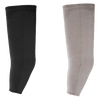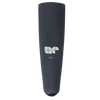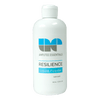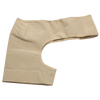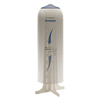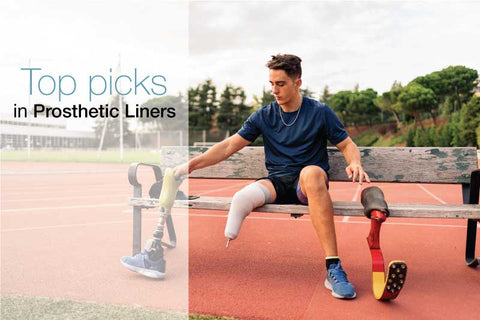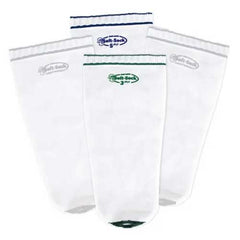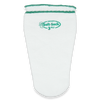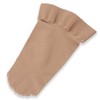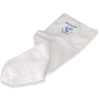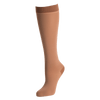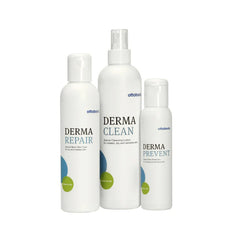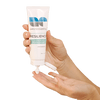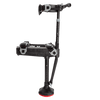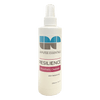Caring for Your Skin: Managing Prosthetic-Related Contact Dermatitis
In a rush? Read the summary:
Prosthetic contact dermatitis causes painful skin reactions that impact prosthesis wear. It includes irritant and allergic types, each needing tailored care. Key strategies include managing sweat, avoiding allergens, using patch testing, and considering treatments like Botox or skin-strengthening therapies. A consistent, hypoallergenic skincare routine is essential for comfort and long-term skin health.
———
Reading Time: 5 minutes
For many people with limb loss or limb difference, wearing a prosthetic limb isn’t just about learning how to move with it; it’s also about caring for the skin around the residual limb and managing the environment within the prosthetic socket.

Moisture buildup, friction against prosthetic liners, and exposure to materials such as rubber and adhesives can trigger skin reactions within the prosthetic socket. And these issues often lead to contact dermatitis, which, if left unmanaged, can affect comfort, function, or even prosthesis use itself. This is why understanding how to identify, prevent, and treat symptoms is essential to maintaining healthy skin and a comfortable prosthetic fit.
Irritant vs. Allergic Dermatitis
Contact dermatitis has two types: Allergic Contact Dermatitis (ACD) and Irritant Contact Dermatitis (ICD). The former occurs when the skin reacts to specific substances, like rubber, metal components, adhesives used in prosthetic fabrication, and even textiles, like synthetic fibers polypropylene and elastane.
Meanwhile, the latter is caused by friction, heat, and moisture inside the prosthetic socket, often worsened by sweat trapped under liners. Think raw spots, redness, and skin breakdown.
The symptoms of both dermatitis types often overlap, so differentiation relies on a thorough history, clinical exam, and, in cases of persistent rash, patch testing. Studies show one-third of residual limb dermatitis cases are allergic in nature.
Spotting Symptoms
You may want to get in touch with a dermatologist and/or prosthetist when you notice the following:
-
Redness, scaling, or itching after donning the prosthesis
-
Sore spots or weeping lesions where the prosthetic socket comes into contact with the skin
-
Persistent rashes that flare up after prosthetic fitting
Your healthcare provider can evaluate changes, assess your medical history (including changes to prosthetic materials and new symptoms), and conduct patch testing in suspected allergic cases.
How to Manage Contact Dermatitis
Irritant Dermatitis
-
Improve moisture control. Remove the prosthesis periodically to air out your limb and use prosthetic antiperspirants (like the Alps Prosthetic Antiperspirant Spray) at night to reduce sweating. For severe hyperhidrosis, in-clinic treatments, like botulinum toxin (Botox) injections or microwave-based therapies, can help.
-
Minimize friction and pressure. Ensure prosthetic liners are properly fitted with adequate sock layers to maintain your socket fit. Consider using friction-reducing patches (like the Tamarack Glidewear Prosthetic Liner Patch) on vulnerable areas, such as the end of a bone, the knee cap, or sensitive areas.
-
Repair the skin barrier. Use gentle cleansers that are hypoallergenic and fragrance-free. Apply water-based moisturizers after washing, but allow them to fully absorb before wearing the prosthesis.
Allergic Dermatitis
-
Identify and avoid allergens. Patch testing—like the T.R.U.E. TEST (35 allergens) and the North American 80 Comprehensive Series—can help you pinpoint triggers. Once identified, avoid contact and consider alternative liners or components made of hypoallergenic materials.
-
Reduce inflammation. Use topical corticosteroids (this may require a prescription) to manage flare-ups, while strictly avoiding contact with the allergen.
Advanced Options
If the problem persists, you might want to consider other methods to help manage contact dermatitis. These solutions can enhance skin durability and comfort over time.
-
Botox or microwave therapy. These treatments help reduce or eliminate excessive sweating that can cause irritation.
-
Laser hair removal. Helps reduce folliculitis and ingrown hairs within the prosthetic socket. However, please avoid shaving as it may cause or exacerbate these skin issues.
-
Fractional CO2 Laser and Scar Remodeling. This treatment can help smooth the friction-promoting post-amputation scar on your residual limb.
-
Molecular skin strengthening. Emerging research explores boosting collagen and using fibroblast therapies to enhance skin resilience.
Build a Skincare Routine
A daily skincare routine can help you prevent or minimize any prosthetic-related skin issues. This is your foundation for managing contact dermatitis and other skin issues:
-
A gentle cleanse. The first step in any skincare routine should be good cleansing. Make sure to use only mild, fragrance-free cleansers after each prosthesis use.
-
Moisturize. Consult your prosthetist to help you select a dedicated prosthetic moisturizer. Avoid using anything oil-based, as it can absorb into certain prosthetic materials, such as thermoplastics and silicones. Choose water-based moisturizers or approved silicone lotions to soothe and strengthen skin barrier integrity.
-
Control sweat. It’s best to apply prosthetic antiperspirants at night and first thing in the morning.
-
Inspect your residual limb regularly. Inspecting the skin on your residual limb with a mirror or by hand can help you catch red spots, blisters, or rashes early, which can help prevent serious issues.
Additional skincare tips to remember: use gentle hair removal options (avoid shaving; instead, consult your dermatologist on using laser hair removal), change prosthetic socks daily or frequently throughout the day (especially when you sweat a lot), and keep your prosthetic liner and limb clean.
The Bottom Line
Healthy skin is a vital foundation for prosthetic comfort, confidence, and mobility. With thoughtful care, proactive maintenance, and the support of your healthcare team, managing contact dermatitis is another step toward gaining functional independence.
Related reading:
Why are Fragrance-Free Products Best?
Prosthetic Liner Issues? Here are the Possible Causes, Solutions

